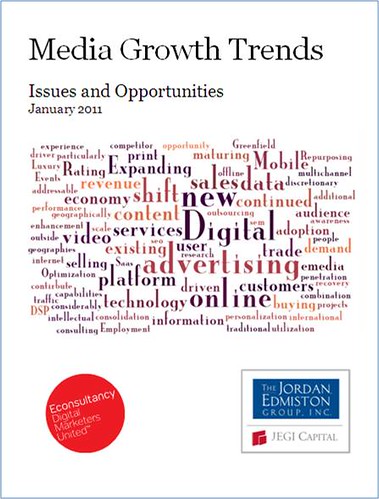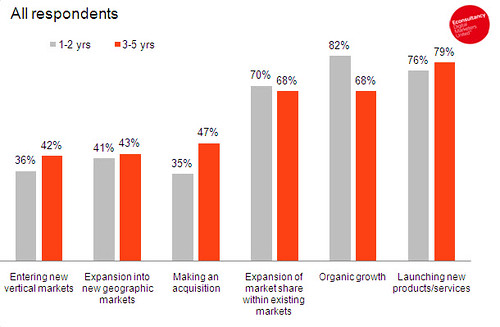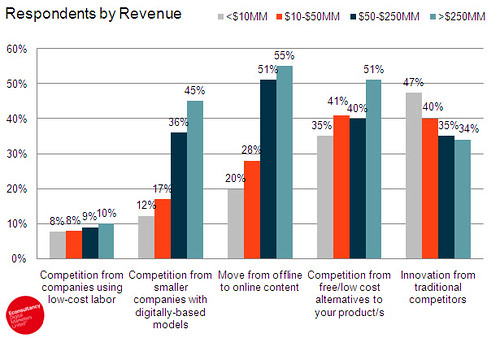A new study by E-consultancy explores the opportunities and challenges in media and publishing using feedback from nearly 500 media company CEOs and senior executives.
The
Media Growth Trends report was produced in association with The Jordan, Edmiston Group Inc., the leading media and information investment bank. This partnership provided access to an extraordinarily senior audience that participated in a survey fielded in late 2010.
Broadly speaking, media organizations are optimistic about the near term as the North American economy continues to improve. Regardless of company size or sector, they predict organic growth to be the primary growth driver in the next 12-24 months. Looking further out, however, they see the need to expand though new products, new markets and for many, acquisitions.
As you look at the [near and mid-term future], what are the likely growth drivers for your organization?
The dichotomy between near and longer-term views is sharpest at large organizations. 85% of companies with revenue over $250 million cite "organic growth" as their primary driver in the next one to two years, but that percentage drops to 63% in the three to five year range.
These companies appear to be taking a more balanced approach to the future growth of their companies than their smaller rivals, with increases expected to come from entering new verticals and new geographies, as well as launching new products and services.
When it comes to your organization's growth, which of the following external issues are specific concerns?
To achieve growth, organizations of all sizes have to overcome internal and external obstacles. The chart below provides a clear picture of how companies of various sizes view their competitive landscape.
The general digital shift that is the engine for many smaller organizations presents the largest challenge to the largest organizations, typically those with long-standing offline revenue streams. The concern for smaller organizations, not surprisingly, is that these well-funded traditional competitors will use their advantage in brand and resources to offer down-market products.
The chart below explores the internal obstacles to growth. Smaller companies suffer from being small; they can lack the capital or credit to achieve their growth plans. However, they're less likely to encounter the other key obstacles cited by larger competitors, most notably a lack of talent in emerging areas.
Companies at the high end of the revenue scale have their own size issues. Their executives note the difficulty presented by conflicting agendas and corporate structure itself. While these are enduring issues, they are most acute during times of change.
When it comes to your organization's growth, which of the following internal issues are specific concerns?






No hay comentarios:
Publicar un comentario